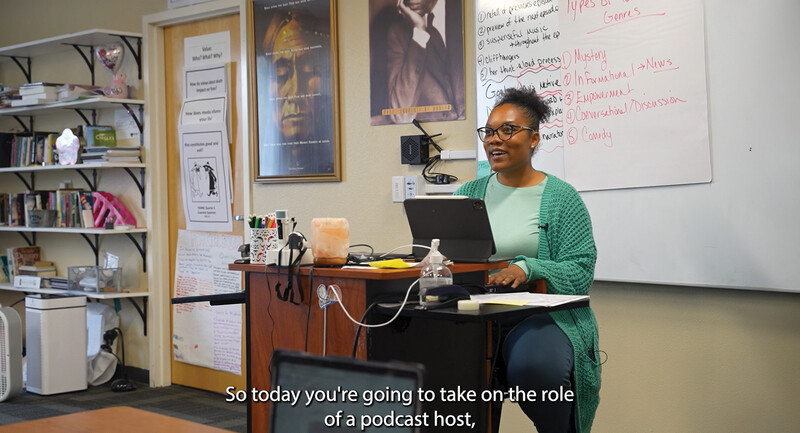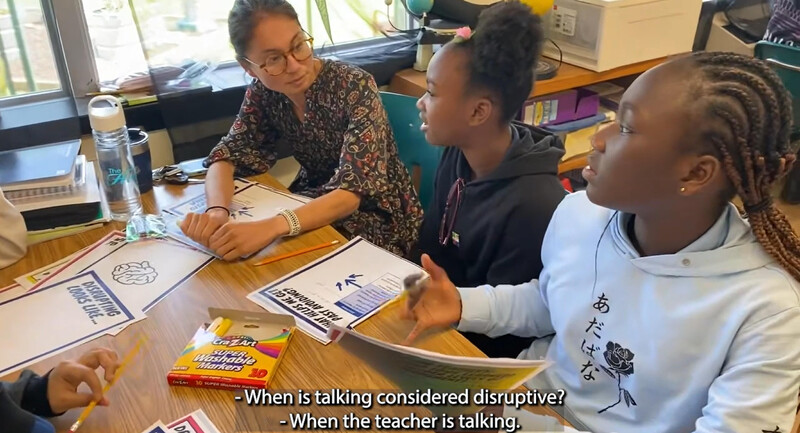In order to achieve success, every student needs to feel wanted, included, and valued in school (DeWitt, 2016). Making students new to the country, community, and the school feel at home is an additional challenge. English Language Learners (ELLs) come to school with a variety of backgrounds, needs, and expectations. Integrating them into a school so they feel included, as well as teaching them English and academic content, is vital to their success.
Embedding Culture – More Than a Pot-Luck Dinner:
How do you include new students in your school community? Is it the same for those new to the country and learning English? Including multiple cultures within a school requires more than holding an international night with a pot-luck dinner. Although students are often in classes (English and content) according to their English language development, everyone should be welcomed within the greater school community and their background not only acknowledged but also shared. Since our students come from 29 countries and speak 19 languages, our lobby displays a world map with student pictures and countries/cities identified. We also have our “I am Arlington Project” on display. This project, adapted from the “I Am From…” poem template, includes a brief statement about the student with a few significant statements about their country of origin, a flag, other pictures, and ends with “I am Arlington” because we are all from Arlington. Our morning announcements have fun facts for holidays from around the world. Teacher projects include opportunities to share personal stories, information from their countries, and cultural traditions. When possible, we try to introduce students from the same countries for peer learning and mentorships. Teachers need to be aware of the cultural norms for each of their students (Botello, Lindberg, Mascarenaz, Philllips, & van der Valk, 2017). If you don’t know the cultural norms of a particular area or country, ask the students. What are their expectations from school? From teachers? How do they show respect? Having a list of questions to ask all new students helps the student feel valued and included. Providing opportunities for input into school activities and events is also vital. We provide monthly meetings for school advisory with translators if needed. During several of these advisory sessions, students requested additional classes in grammar and conversational English. Both of these are now firmly a part of our course offerings. And what about the library? Does your library have a cultural variety within its collection? This variety should be seen in the reading selections for the classrooms as well (Botello, et al., 2017). All of these activities help engage English Language Learners in school, make them feel included, and improve their confidence in every classroom, a key to ELL success (Gallagher, 2016).
Learning to Be a Student:
Many of our students are newcomers, all have interrupted education, and most don’t know how our school works. Understanding expectations, what it means to be a good student, and the skills required in the classrooms need to be taught. These skills are explicitly taught in the beginning levels of English and are key strategies for student success (Gersten & Baker, 2000; Linan-Thompson & Vaughn, 2007). Specific skills such as being prepared to learn, what materials to bring to class, the importance of arriving on-time, note taking, vocabulary notebooks, research skills, and others, all require explicit instruction and are skills that are reinforced and refined in all subsequent classes. Having a list of these skills for all teachers to review and reinforce is well worth the time it takes to develop. Students who arrive without student skills but with higher levels of English may miss some of the explicit instruction because they miss the beginning English classes. It is always a great reminder to review these skills with students in every level of English or content class.
Owning the English Learning:
Although English language learning classes are separated by English development level, they are sequenced and aligned. As our school moves to competency-based instruction, the outcomes for each level are explicit and transparent with frequent assessments to inform student progress. Students know what is expected at each level and exactly where they stand within these expectations. This empowers student ownership of their own learning and helps them make connections between student behaviors and learning outcomes, both deemed best practices for ELL teaching (Gallagher, 2016). Providing explicit English instruction, with plenty of opportunities to practice, using progressive and structured patterns, ensures student acquisition of English as well as builds student confidence and empowerment, additional exemplary practices (August & Hakuta, 1997; Gallagher, 2016; Gersten & Baker, 2000). However, instruction needs to be individualized, differentiated, and personalized. Students need the opportunity to work 1:1 with the teacher, get direct instruction in both whole group and small group, work peer-to-peer and have multiple opportunities to practice across multiple activities, allowing for the repetition each student needs (Gallagher, 2016). Multiple modalities need to be embedded in learning activities to fully engage students (Botello, et al., 2017). Using a competency-based approach is a natural fit to meet these requirements.
Beyond English – Mastering Content:
The ultimate demonstration of English skills is the transference of the language skills to content classes. Since our students all have interrupted schooling, many are missing the background knowledge in the content areas. Students within our community learn about beginning U.S. history in elementary grades. However, students coming to the U.S. in high school most certainly have no or very limited background knowledge of U.S. history or government. We also find that students with interrupted schooling have limited vocabulary and background knowledge needed for high school science courses. Since all of our beginning English language classes (WiDA 1 & 2) typically have a paired/blocked reading class, we changed all of our reading classes to content reading courses, embedding the necessary background knowledge, vocabulary, and content needed for students to ultimately be successful in core history or science classes (Menken & Kleyn, 2009). Now in our third year, this approach has proven to be a success in that students enter the core content classes with the basic vocabulary and background knowledge to experience success. In addition, this approach builds student confidence to take more challenging courses, connecting their knowledge across courses which accelerates learning (Gallagher, 2016).
Reaching Outside the School – Connecting the Whole Community:
Don’t forget to forge those connections with the community with your ELL students. Schools that link community resources with students and families leverage the assets of the community to support student achievement and personal growth, improve the school, and strengthen the community (Coalition for Community Schools, 2003). Although community resources add support to your ELL students, students may not know how to access these services. We have links with the local food bank for students experiencing food insecurity, and a clothing bank for those who have never owned a winter coat (because 60 degrees is the coldest they’ve experienced). Health and medical services and screenings, such as vision, hearing, and dental, are brought into the school, and speakers come weekly to provide information about services available in the community – from yoga to mental health programs. Students ride public transit to school instead of school buses. We are connected with the local community college by offering dual enrollment classes. We even take them to the public library to get their own library card. To complete the full circle of community connection, students learn to give back to the community through service work in our very active Key Club.
Empowering ELLs:
Creating a welcoming, yet challenging and instructional focused environment for all ELLs to learn and thrive is a multi-faceted task. Culturally, students need to feel valued and included. They need to know the learning outcomes, class expectations, as well as what it takes to be a good student, thus learning the culture of the school. They need multiple opportunities to apply and practice their skills. They need support in the learning process. They need to transfer those skills to content learning using their newly acquired English. And, finally, they need opportunities to connect with their community to feel fully integrated and achieve personal success. With these supports, students will become empowered learners with the ultimate goal of transferring their skills to post-secondary opportunities.
Barbara Thompson, Ed.D., is the principal of Arlington Community High School, Arlington, Va., a fully-accredited alternative high school for students aged 16 and older. The school is 92% English Language Learners. She has taught in classrooms from pre-school through high school. She is also currently an adjunct professor at Johns Hopkins University and Marymount University.








